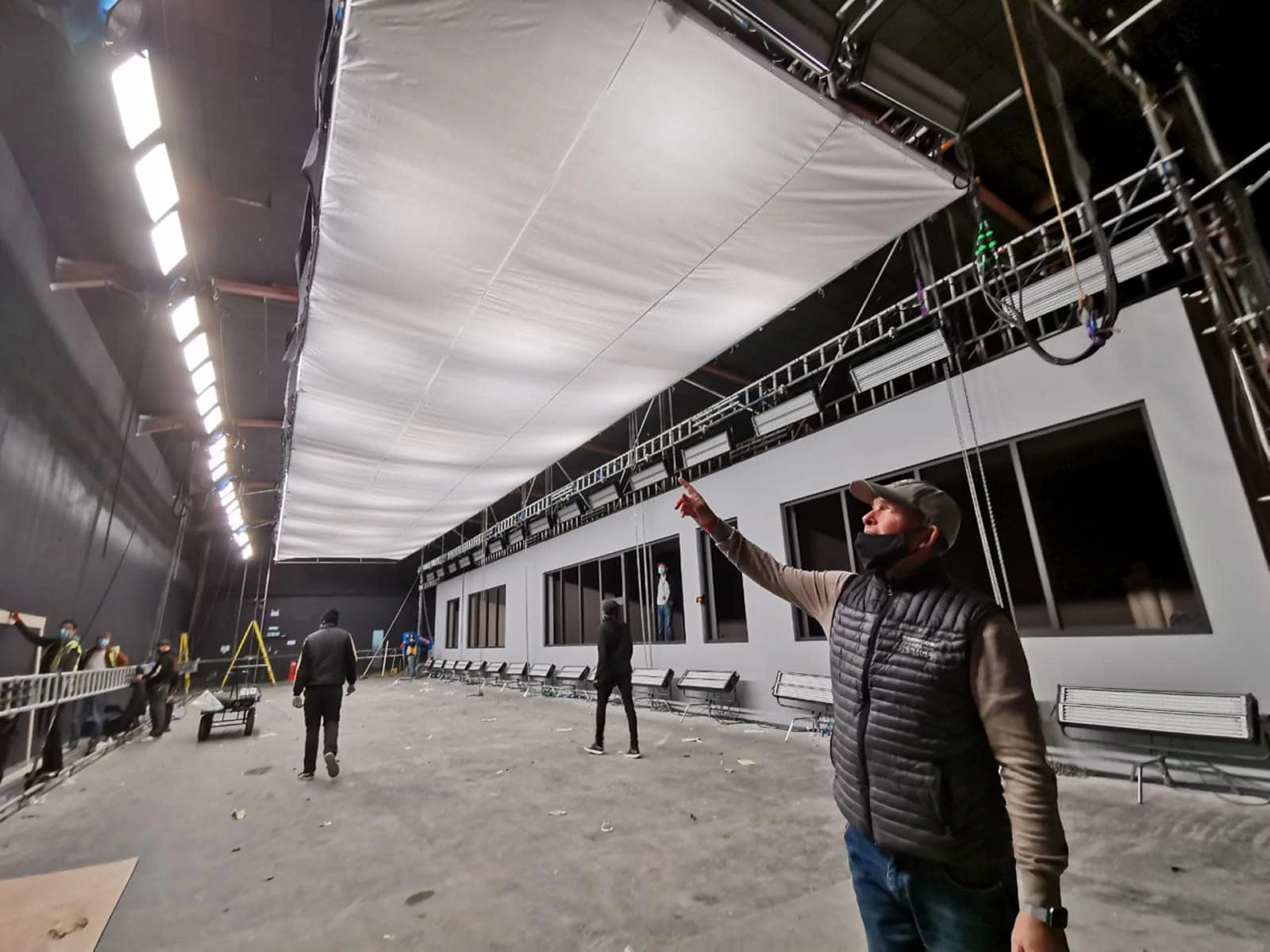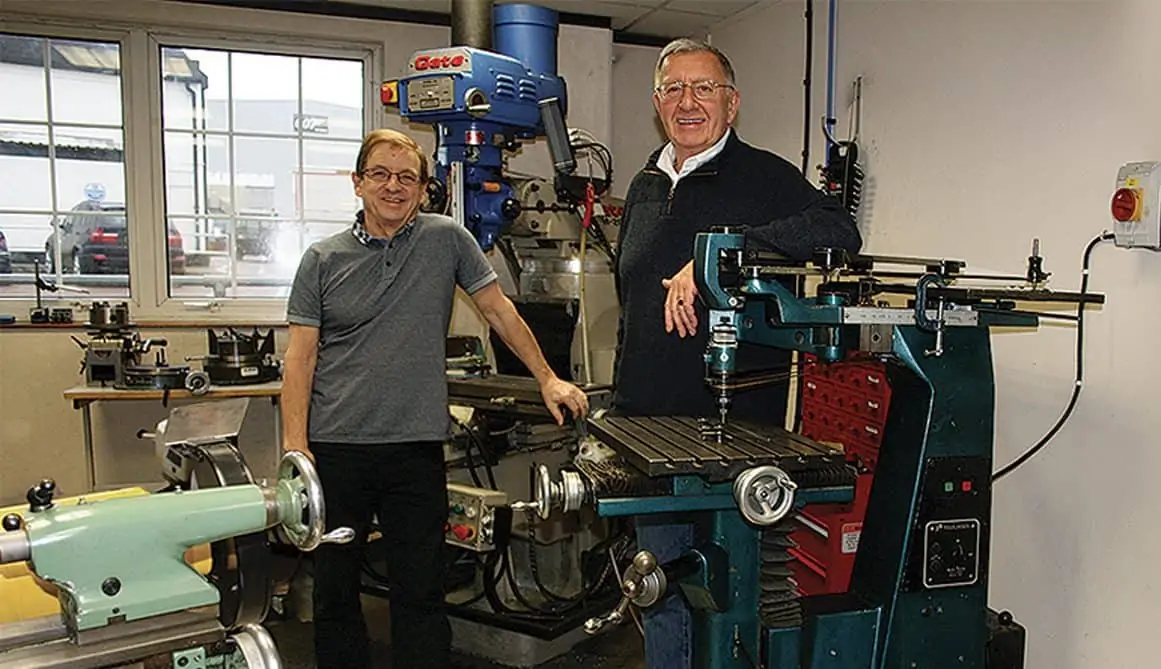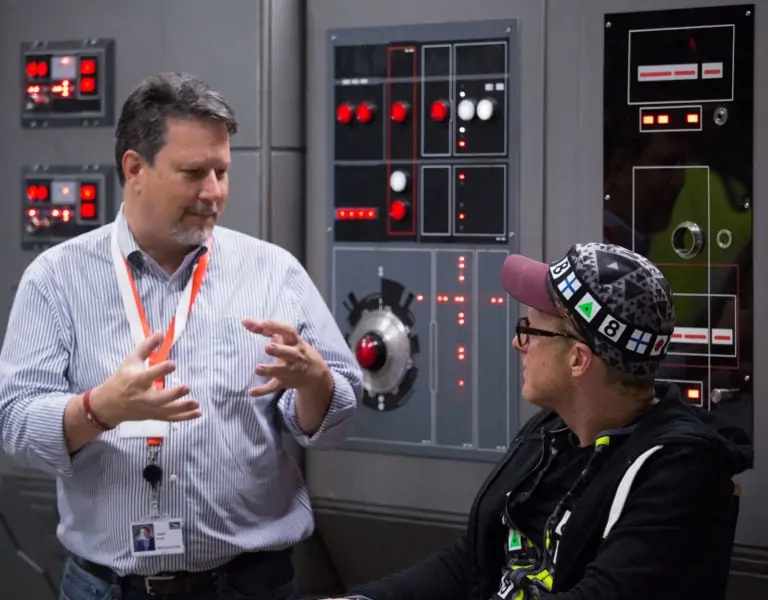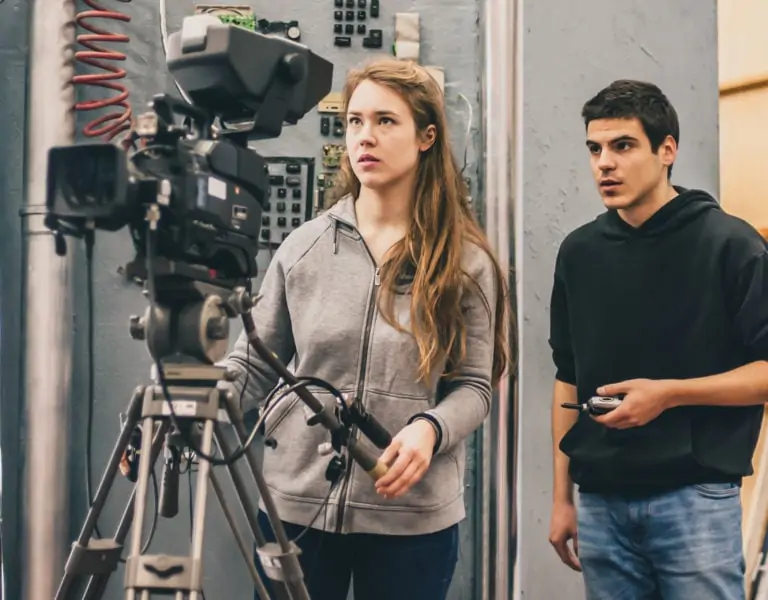FACT FILE
Role: Gaffer
Age: 54
Born: Winchester
Education: Westgate comprehensive, Winchester and Eastleigh Tech College
Hobbies: Golf, cycling, football
SELECTED FILMOGRAPHY (as gaffer unless otherwise stated)
Adult Material (2020) (TV series)
Ted Lasso series 1 / 2 2020/21 TV series)
Top Boy (2019) (TV series)
Bodyguard (2018) (TV series)
Save Me (2018) (TV series)
Bounty Hunters (2017) (TV series)
Call the Midwife (2013–2017) (TV series)
The Mill (2014) (TV series)
Complicit (2013) (TV movie)
The Fear (2012) (TV mini-series)
Monroe (2012) (TV series)
Inside Men (2012) (TV mini-series)
The Jury (2011) (TV series)
Nanny McPhee Returns (2010) (second unit)
Moses Jones (2009) (TV mini-series)
Stone of Destiny (2008)
Criminal Justice (2008) (TV series)
The Bourne Ultimatum (2006) (2nd unit best boy, UK and Morocco)
Ripley Under Ground (2005)
Thunderbirds (2004) (2nd unit rigging gaffer)
Lara Croft Tomb Raider: The Cradle of Life (2003)
Die Another Day (2002)
Best (2000)
Our Boy (1997)

How did you first get started in the industry?
My first introduction was through my father. A close family friend Richard Gamble was part owner of a fantastic lighting rental house called Mr Lighting based in Kings Cross and my dad worked there for some years. I can remember my first drop offs of kit were on two British classics Mona Lisa (1986) starring Bob Hoskins, Cathy Tyson and Michael Caine and Wish You Were Here starring Emily Lloyd (1987).
What was your career progression?
I was an electrician for TV and features and then best boy on TV and features. My next roles were as a rigging gaffer 2nd unit and then gaffer 2nd unit before I became a full-time gaffer.
Did you always want to be a gaffer?
Yes, I think I did. I like the challenge of being my own boss with the responsibility of what that brings, otherwise I would get bored.
How did you learn the trade?
I left school, went to a tech college, did an apprenticeship, and then had a few jobs before settling down and building a career in the film industry.
What was your big break?
By the early ‘90s I had already had a few 2nd unit rigging gaffer roles and 2nd unit gaffer roles, but no senior gaffer roles. I was then asked to gaffer the film Stone of Destiny (2008) with DP Glen Winter CSC. The period feature was set in the ‘50s and mainly in Scotland and there were a lot of challenges including many night shoots.
The best challenge was lighting Westminster Abbey. It took some heavy negotiation and a large bottle of scotch for the senior contracts manager to persuade them to let us use balloons which were a great success and could be left up in the day.
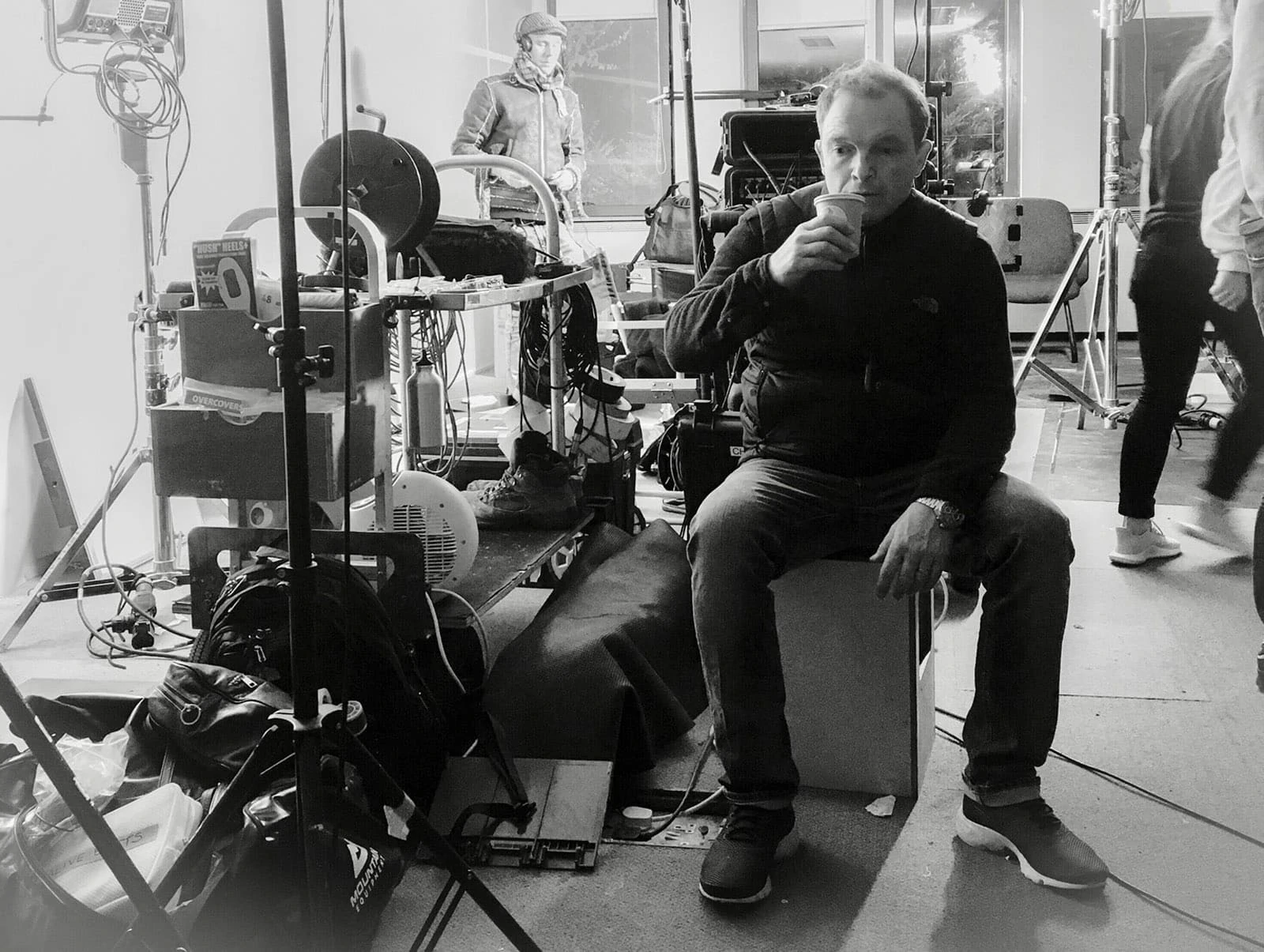
A brilliant DP called Witold Stok, who I worked with when I was very young, would light predominantly with tungsten and showed me how to embrace darkness and not to be afraid or worried about it. His attitude to lighting was ‘less is best’ – he was the first DP who made me really sit up and understand lighting.
Gaffer John Attwood
Who or what are your biggest inspirations?
My personal inspiration is my dad who is retired and still going strong at 83, my wife, and all my family – they keep me going forward. In terms of industry inspirations, there are so many. I would have to say gaffers Eddie Knight, Stuart Monteth, and the late Ronnie Phillips – all brilliant and full of experience on big features. I learnt so much from them in the late ‘90s. Gaffers John Donahue and Billy Tracey also taught me a lot in the late ‘90s when I was a young electrician.
What are the key qualities of a great gaffer?
A good balance is key to all aspects of being a gaffer. Understanding your crew’s needs, production’s needs, listening, being protective, having negotiating skills of a hostage negotiator, being able to say no tactfully, and definitely never buying a round.
What are the fundamentals of a successful gaffer/DP relationship?
Listening, being inventive and intuitive, and understanding the needs of a DP. If it’s a new DP, do some research with previous crew about what they like or don’t like when it comes to lighting. I work mainly in the TV drama world, high-end drama, and the budget isn’t the same as a multi-million-pound feature film so budgets can be tight. Giving options as opposed to saying, “that’s never going to happen,” is a better way to keep a good relationship with the DP.
Who are your regular crew?
You are only as good as the crew around you. I’ve been very lucky to have a good selection of crew to call on over the years and a lot of them are now gaffers themselves which is rewarding. Best boys of recent times have included Dave Lebon, Lee Johnson, and Paul Joy – all are excellent in their own right. Paul is working with me now and has a brilliant technical mind. It won’t be long before he’s an established gaffer.
I also have my eldest Son Oliver Ansty who is at the beginning of his journey and doing really well. My regular electricians are led from the front by a technical robot called Damien “Damo” Ansell who is a brilliant spark and inspires the crew around him to up their game.
A regular rigger is also key, as any gaffer would tell you. I’ve worked with Shay Gallagher and Pat Killeen and his team for a few years now. It must be a mutual respect as he keeps saying yes when I ask him to come on board.
I’m always happy to consider people from any background or gender as part of my crew just as long as they have all the qualifications and are hardworking, enthusiastic and a non-moaner. My regular crew members are proof of that.
What movie/production has been your biggest challenge?
They are all a challenge. I think the smaller jobs with a basic budget are the most testing. Last year I worked on two dramas, not our usual Netflix, Sky or Apple productions. One was a BBC 2 six-part drama (Trigonometry with DP Sean Price Williams) and the other a Channel 4 production (Adult Material with DP Chloe Thompson BSC). You have to be very resourceful with the lighting and the budget. It was a real test and brought any egos into line.
It also really helps to have a good relationship with all the lighting hire companies to help you out when needed. MBS and PKE Lighting have looked after me well throughout my career.
Which have been your favourite movies to work on?
Your first Bond film as a humble electrician is pretty magical. I always remember Stuart Monteth, best boy on Die Another Day saying to me “that’s a new one on me son, 96 sparks out today.” Working second unit on The Bourne Ultimatum was also incredible. I was best boy and we worked on all the stunts on location in the UK and Morocco.
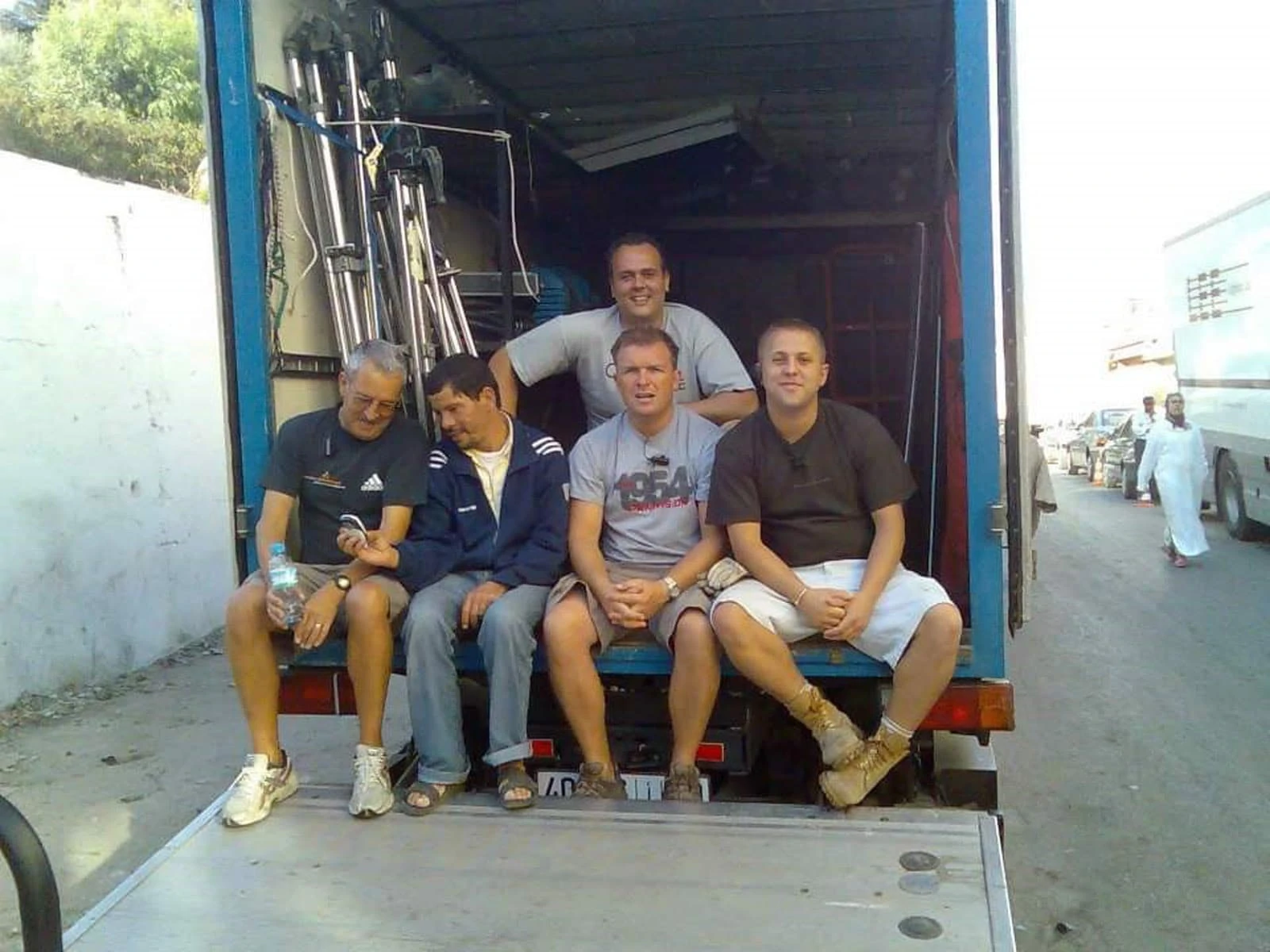
Which are you most proud of?
Recently, Bodyguard, Topboy, Save Me, and three seasons of Call the Midwife.
What is one of your favourite on-set memories?
I met the brilliant DP Tim Fleming ISC while I was an up-and-coming gaffer working on the series Moses Jones back in 2008. We bonded and we were given complete artistic license to light. It was a predominantly black cast, so we experimented with a lot of colours for skin tones. We were using LED panel lights for one shot and we just were not getting the colour we needed with the filters. Tim reached into the wastepaper bin, took out a Sainsbury’s orange carrier bag and put it over the light to get the orange colour he needed. Brilliant. Tim is an artist when it comes to lighting, keeping it very simplistic but at the same time creating beauty.
I was taught that lighting should sell the mood of the story and should be modelled to this. It doesn’t have to be complicated or use the latest tech. I often find that it feels like we are trying to be the first to use or first to try instead of concentrating on conventional film lighting.
Another British DP whose work I really admire, and I like working with is Stuart Biddlecombe, along with Chloë Thomson BSC, Adam Scarth, David Rom, John Sorapure, Piers Leigh, Jan Jonaeus, and many, many more I’ve had the pleasure of working with.
Often ahead of the curve, John has embraced new technologies as they emerge, and he has always had a diverse lighting team before diversity was a watchword.
Cinematographer Piers Leigh

What is your favourite kit?
My Gaffers Control kit is my latest addition and it’s amazing. I’m also a fan of my Aladdin Mini Kit, Astera Titan kit, Astera NYX Bulb kit, and Astera software. All of these can get you out of trouble and compete with today’s rapid speed of filming. I’m also a traditionalist and I like the old-style conventional lights such as HMI 575 ,1.2 ,2.5, and so on.
A brilliant DP called Witold Stok, who I worked with when I was very young, would light predominantly with tungsten. He lit a whole street scene at night using a couple of redheads and blondes. He showed me how to embrace darkness and not to be afraid or worried about it. His attitude to lighting was ‘less is best’. He was the first DP who made me really sit up and understand lighting. He is also a true gent with a wicked sense of humour.
What new lighting kit have you been impressed by?
I love a gadget. My Sekonic colour temperature meter is always with me. I love LEDs too – battery, wifi. Who doesn’t? It’s made our life in lighting so much easier. I trawl the internet and generally keep up to date with suppliers as much as I can. ARRI has just released the new Orbiter which has some great features, so I am playing with that currently.
What obstacles do you face in your career and how do you overcome them?
I would be lying if I said I hadn’t had any knocks in this industry. When I first started, we didn’t have the amount of work that’s available now. We would go weeks without work, and I think this made me adopt the attitude of ‘treat every job like it’s your last’. This has always helped me keep my feet firmly on the ground and not have a big ego. I never feel like I’m a big gaffer – I always consider any job, no matter what the size.
What advice would you give aspiring gaffers?
Always treat everyone on set as an equal, from the runner to the executive. Today’s runner or trainee is tomorrow’s producer or DP.
What are you working on now?
I’ve recently finished Netflix’s latest series of Topboy – 24 weeks shooting in the UK, Spain, and Morocco with Adam Scarth as DP. I’m currently on Ted Lasso series two. It’s challenging due to the COVID restrictions, although as always, we are an industry that can adapt well to any obstacle we face.

Cinematographer Stuart Biddlecombe says:
“John is not just a first-class gaffer but also a good man. What I need from a gaffer is someone who looks after the running of the lighting department and also looks out for me when I’ve got my hands full. John does all of this with great ability and in good humour.”
Cinematographer Tim Fleming ISC says:
“I first encountered John when seeking a gaffer for Moses Jones, a BBC 2 drama shot on Super 16. From the outset, chatting with John was a pleasure as he completely understood my approach. As a DP, I like to work intuitively yet fully prepare for projects. John maintains a great vitality and willingness to engage and explore options, which are not textbook. When I may be overthinking a challenge, John will often have a simple and creative solution. We’ve worked together a number of times now and we always enjoy sharing new technology and ideas. John is happy to explore the best tool for the job whether that be tungsten or HMI or LED. He is someone who has your back and is creatively invested in what we do. John is a consummate collaborator.”
Cinematographer Piers Leigh says:
“I first worked with John nearly twenty years ago when I was a young and inexperienced DP. What struck me then and what still strikes you now, is that John is a calming presence on set and that nothing is ever a problem. John has always been constructive and supportive as a colleague, which was crucial for me in my early career. John is always a great example of how to behave on set and he goes out of his way to support those younger and less experienced colleagues, whatever department they are in. Often ahead of the curve, John has embraced new technologies as they emerge, and he has always had a diverse lighting team before diversity was a watchword. Much more than a colleague, John is a true collaborator, always available with creative ideas, whether to technical problems or budgetary challenges. In fact, his technical competence and ability to befriend production are two things which define him.
As a DP, you couldn’t wish for a better bouncing board, able to deliver exactly what you want or able to diplomatically tell you exactly what you want when you don’t quite know yourself. With John as gaffer, any DP’s work will be well supported and often improved by his input. Full of ideas and energy, John’s enthusiasm for his work is impressive and is an inspiration to many less experienced colleagues.”
Cinematographer David Rom says:
“John and I first met on Ted Lasso. I was instantly impressed with his organisational work on a complex studio and location job. His experience was invaluable and avoided untold problems further down the line. I’d marvel at how he was thinking weeks ahead while I was still getting my head around the next few days. John loves his tech and has introduced me to a large array of new lamps, helping me stay abreast of what’s out there and help choose the right tool for the job. Most importantly John is very easy to talk to and I enjoy bouncing ideas around with him. A really great guy to work with and someone you know will have your back.”
